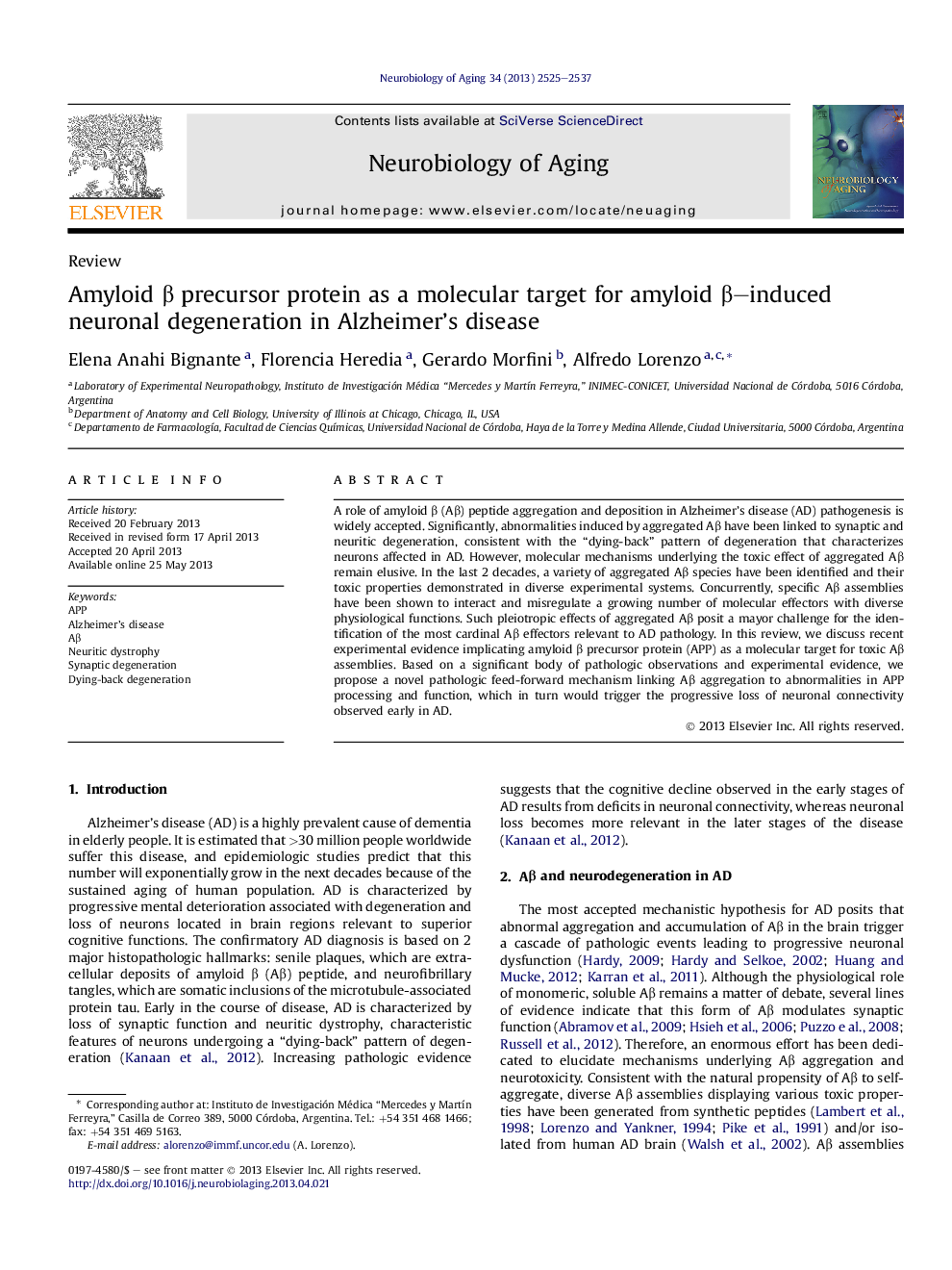| Article ID | Journal | Published Year | Pages | File Type |
|---|---|---|---|---|
| 6806854 | Neurobiology of Aging | 2013 | 13 Pages |
Abstract
A role of amyloid β (Aβ) peptide aggregation and deposition in Alzheimer's disease (AD) pathogenesis is widely accepted. Significantly, abnormalities induced by aggregated Aβ have been linked to synaptic and neuritic degeneration, consistent with the “dying-back” pattern of degeneration that characterizes neurons affected in AD. However, molecular mechanisms underlying the toxic effect of aggregated Aβ remain elusive. In the last 2 decades, a variety of aggregated Aβ species have been identified and their toxic properties demonstrated in diverse experimental systems. Concurrently, specific Aβ assemblies have been shown to interact and misregulate a growing number of molecular effectors with diverse physiological functions. Such pleiotropic effects of aggregated Aβ posit a mayor challenge for the identification of the most cardinal Aβ effectors relevant to AD pathology. In this review, we discuss recent experimental evidence implicating amyloid β precursor protein (APP) as a molecular target for toxic Aβ assemblies. Based on a significant body of pathologic observations and experimental evidence, we propose a novel pathologic feed-forward mechanism linking Aβ aggregation to abnormalities in APP processing and function, which in turn would trigger the progressive loss of neuronal connectivity observed early in AD.
Related Topics
Life Sciences
Biochemistry, Genetics and Molecular Biology
Ageing
Authors
Elena Anahi Bignante, Florencia Heredia, Gerardo Morfini, Alfredo Lorenzo,
